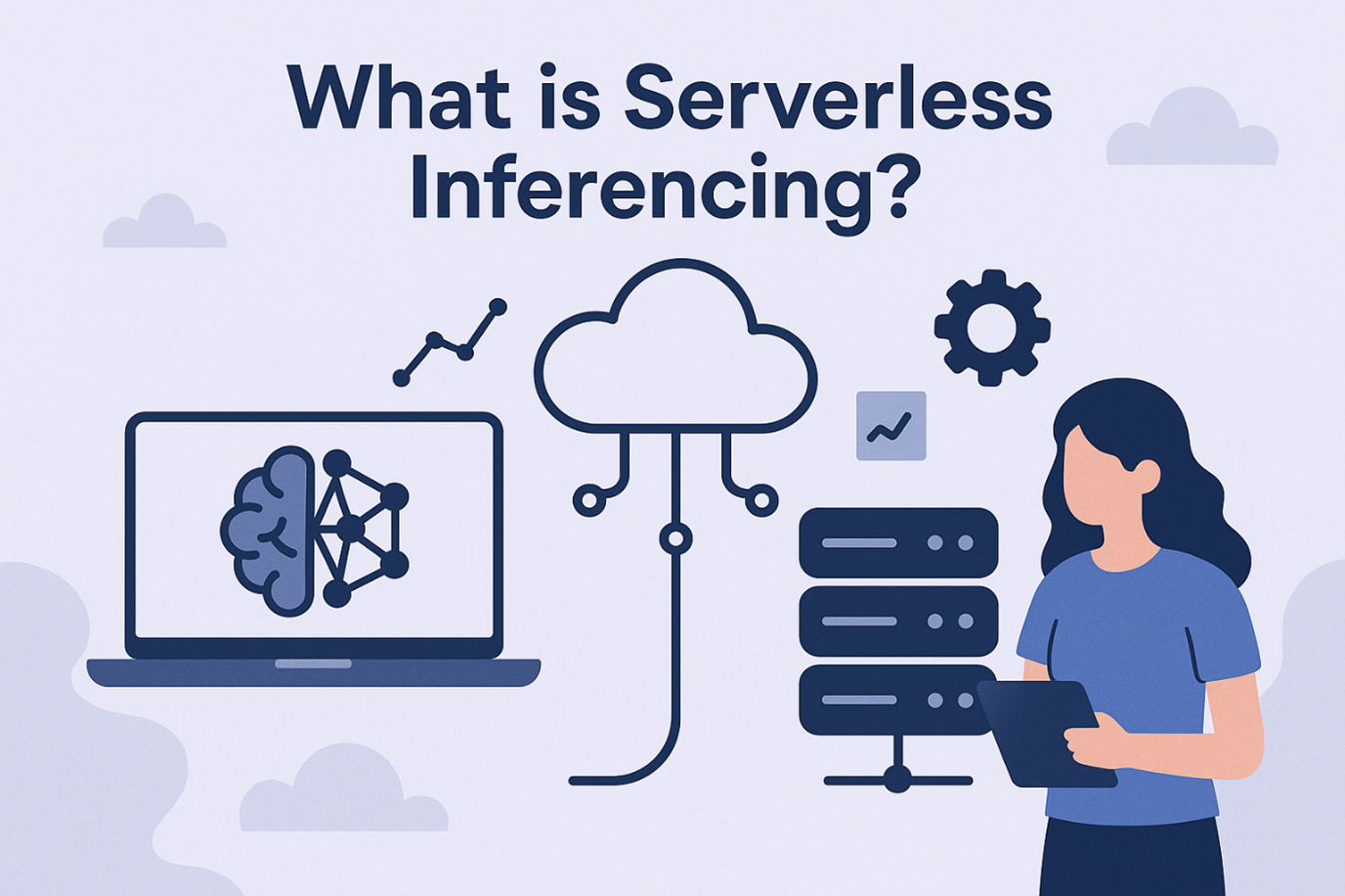What is Serverless Inferencing?
Deploying machine learning (ML) models in production often requires heavy infrastructure management. Teams need to set up servers, allocate GPUs or CPUs, monitor workloads, and handle scaling when demand changes. For many organizations, this adds complexity and cost.

Serverless inferencing solves this problem. It allows developers to deploy and run ML models without managing servers or provisioning compute resources. The cloud platform automatically takes care of scaling, load balancing, and resource allocation. You only pay for the compute power used when an inference request is made.
This article explains what serverless inferencing is, how it works, its benefits, challenges, and real-world use cases.
What Does "Serverless" Mean?
The term serverless doesn't mean there are no servers. Instead, it means the infrastructure is abstracted away. The cloud provider manages the servers in the background, and developers only interact with the service layer.
- In traditional deployments, developers provision servers or containers and manage resources.
- With serverless, compute is provisioned automatically when requests arrive and scales instantly.
What is Inferencing in Machine Learning?
Inferencing is the process of using a trained machine learning model to make predictions on new data.
- An NLP model predicts sentiment from customer reviews.
- A computer vision model identifies objects in an image.
- A recommendation model suggests products to users.
What is Serverless Inferencing?
Serverless inferencing combines the principles of serverless computing with ML inference. It enables developers to deploy ML models as serverless functions or APIs.
- A trained model is packaged and deployed to a serverless environment.
- The platform provisions compute resources when a request comes in.
- The system scales up with traffic and down to zero when idle.
- Billing is based on compute time used per request.
Key Benefits of Serverless Inferencing
- Cost Efficiency - Pay only for compute time used.
- Automatic Scaling - Instantly scale based on traffic.
- Faster Deployment - Simplifies setup and reduces time-to-market.
- Focus on Models, Not Infrastructure - Developers focus on improving models.
- Event-Driven Execution - Trigger inference by events like image uploads or queries.
How Serverless Inferencing Works?
- Model Training - Using ML frameworks like TensorFlow, PyTorch, or Scikit-learn.
- Model Packaging - Packaged in a container or serialized file.
- Deployment - Deployed as a serverless function or API endpoint.
- Request Handling - Platform allocates compute resources and returns predictions.
- Scaling & Billing - Auto-scales and charges per execution.
Use Cases of Serverless Inferencing
- Real-time chatbots and assistants
- Image and video analysis
- Fraud detection in finance
- Recommendation engines
- IoT and Edge AI
Challenges of Serverless Inferencing
- Cold start latency
- Resource limits on large models
- Potential cost overruns with high traffic
- Vendor lock-in across cloud platforms
- Security and compliance challenges
Popular Platforms Supporting Serverless Inferencing
- Cyfuture AI - Serverless inferencing with GPU as a Service.
- AWS Lambda + SageMaker
- Google Cloud Functions + Vertex AI
- Azure Functions + Azure ML
- Open source: Kubeflow, KServe, BentoML
Conclusion
Serverless inferencing is transforming the way organizations deploy ML models. It combines cost efficiency, scalability, and simplicity, making it ideal for real-time, event-driven, and unpredictable workloads. As providers refine GPU-backed serverless services, adoption will only accelerate.
Frequently Asked Questions (FAQs)
1. Is serverless inferencing suitable for large language models?
It depends on size and latency needs.
2. How does billing work?
Pay only for execution time and resource use.
3. Can it handle real-time apps?
Yes, but cold starts must be minimized.
4. Which cloud providers support it?
Cyfuture AI, AWS, Google Cloud, Azure, and open-source frameworks.
5. What are cold starts?
The delay when initializing resources after inactivity.
6. Can GPU-powered inferencing run serverless?
Yes, with providers offering GPU-backed services.
7. How secure is it?
Depends on provider compliance and encryption.
8. Is it always cost-effective?
Best for variable workloads; high-demand may need dedicated servers.
9. How do I optimize models?
Use quantization, pruning, distillation, and batching.
10. Alternatives?
Dedicated servers, Kubernetes, and edge inferencing.







